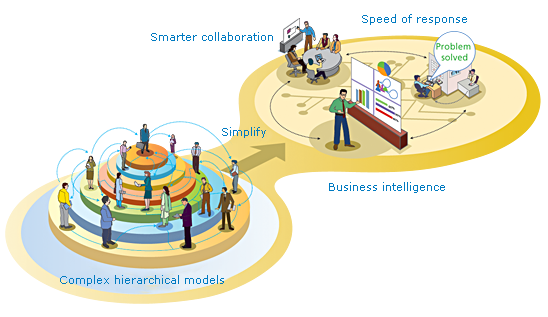 The existing IT system
was proving to be
too slow for the scale
and complexity of
operations at the offices
of a major American
logistics and mail services
company. The information delays were affecting
its revenue collection, customer satisfaction
and operational efficiency. The company was
looking for a 'cost and time-effective' solution.
We developed just the right solution, thus
reducing the delay from eight hours to 15 minutes
for 200,000 daily checkpoints. It also helped the
company track the business processes and provide
timely customer updates. In addition, the revenue
cycle was reduced through on-time capture of
checkpoints for 30,000 daily shipments.
The existing IT system
was proving to be
too slow for the scale
and complexity of
operations at the offices
of a major American
logistics and mail services
company. The information delays were affecting
its revenue collection, customer satisfaction
and operational efficiency. The company was
looking for a 'cost and time-effective' solution.
We developed just the right solution, thus
reducing the delay from eight hours to 15 minutes
for 200,000 daily checkpoints. It also helped the
company track the business processes and provide
timely customer updates. In addition, the revenue
cycle was reduced through on-time capture of
checkpoints for 30,000 daily shipments.
As an enterprise expands in terms of products,
locations, employees and suppliers, and finds ways
to meet the needs of increasing regulations, its
operations get more and more complex. This also
leads to duplication of work and loss of knowledge.
In recent times, several enterprises have realized that
the slide in their revenue or productivity is the result
of their complexities rather than external factors.
Simplification reduces risks and frees up cash. IT-led
innovation should simplify and create a single digital
nervous system for the enterprises to enable faster
flow of information. Single instances, virtualization and
legacy modernization are some of the most important
candidates for simplification. Technologies exist, what
we need is the commitment to innovate and simplify.
In today's dynamic business environment, enterprises
have to collaborate and learn faster than ever
before. Traditional methods of knowledge exchange
are no longer sufficient for today's global enterprises.
Technology makes it possible for people across the
globe to collaborate, exchange thoughts and have
an immersive experience in an informal learning
environment. Together, these improve comprehension
and enhance retention – which goes towards creating
a smarter organization. And, beyond this, IT makes
it possible to infuse the right knowledge to the right
person, at the right time. Through personalization,
smarter organizations are reducing the information
clutter and realizing significant gains in workforce
productivity.
To sustain and succeed in uncertain times, enterprises
need to continually adapt to the rapidly changing
market conditions. Technology can help model, track
and optimize results. Smarter organizations integrate
planning and performance management processes,
systems and metrics with their corporate architecture.
They link business goals, predictive models and day-today
activities with real-time data through connected
systems. This provides them with an enhanced ability
to understand the present and predict the future – thus
reducing uncertainty. It enables smart organizations to
make fact-based decisions dynamically and rapidly to
increase their probability of success. |